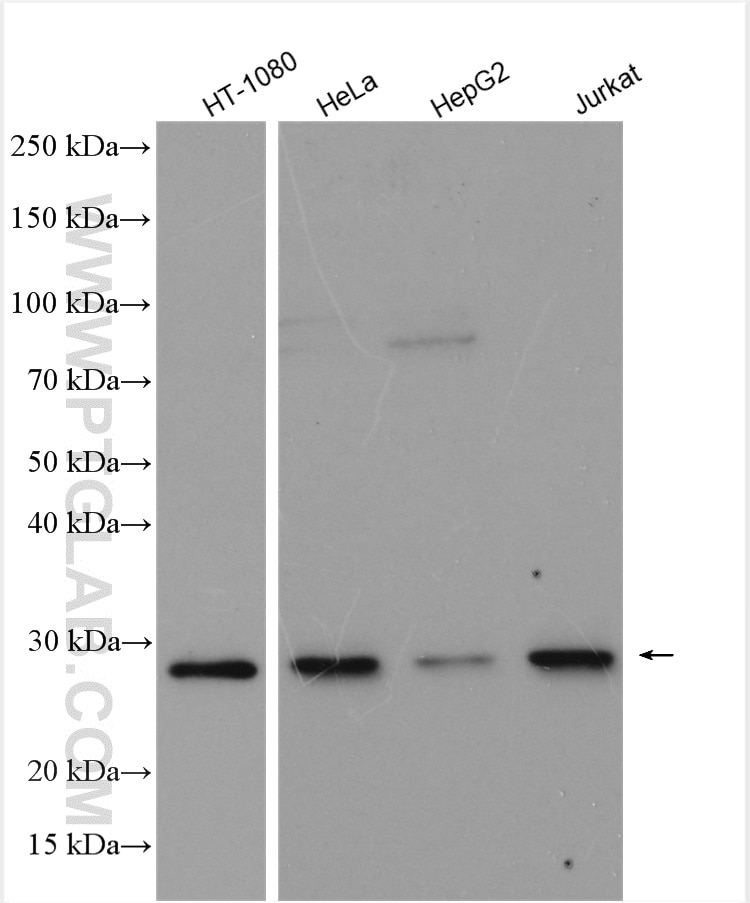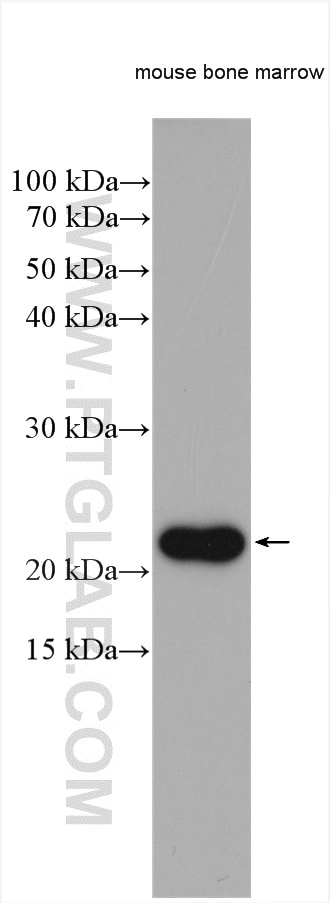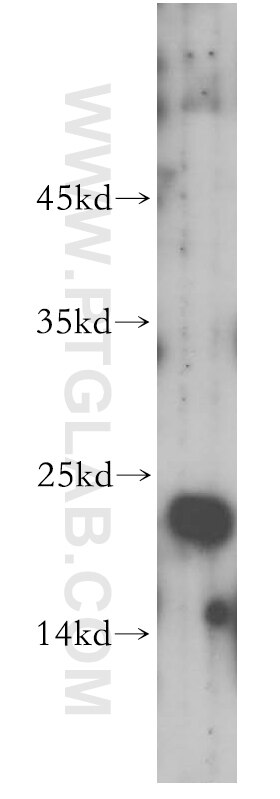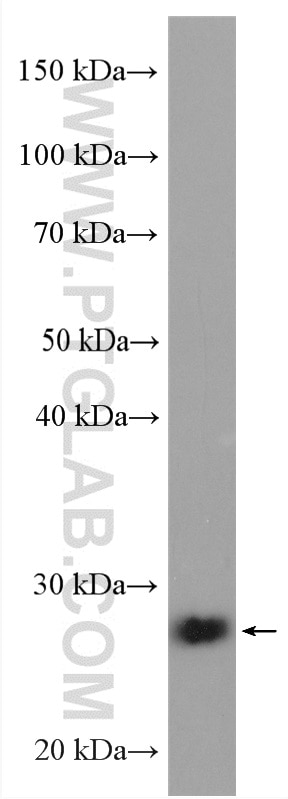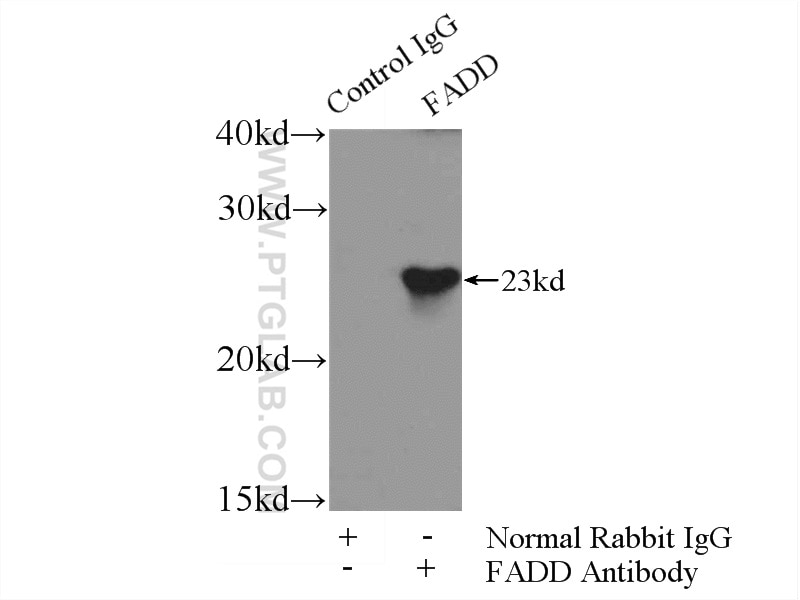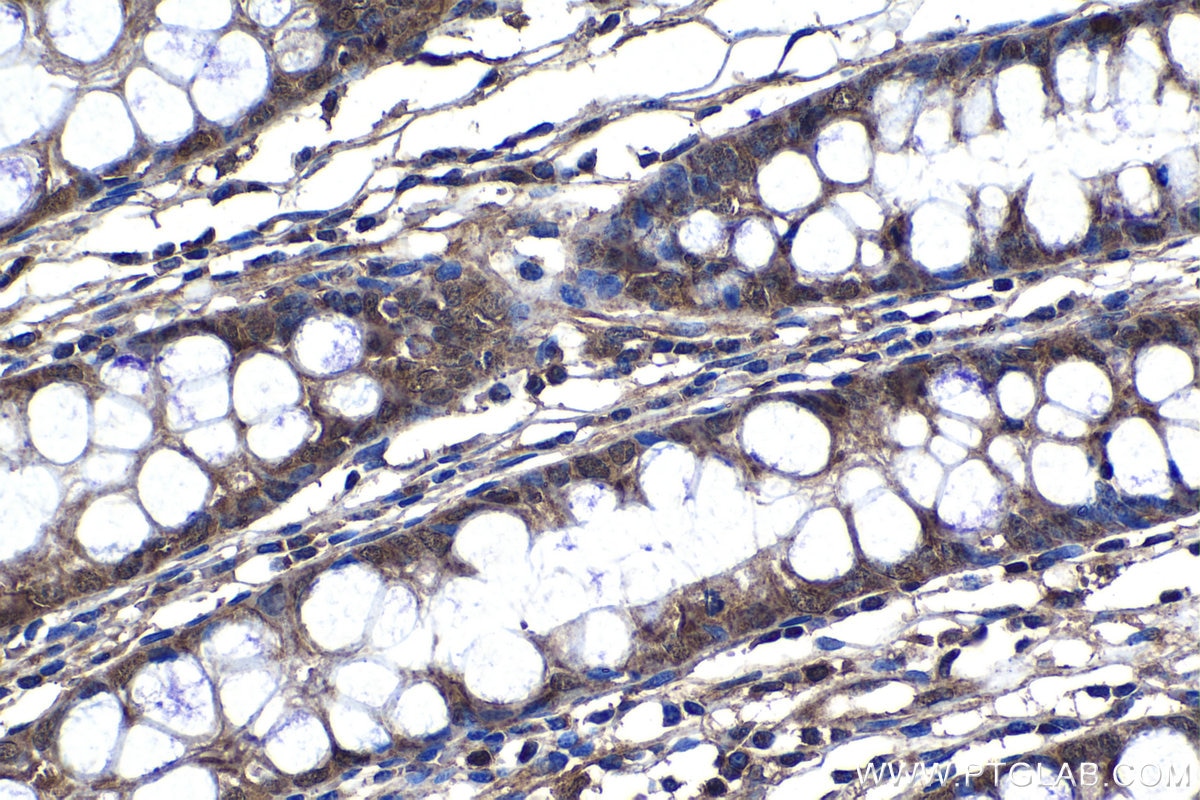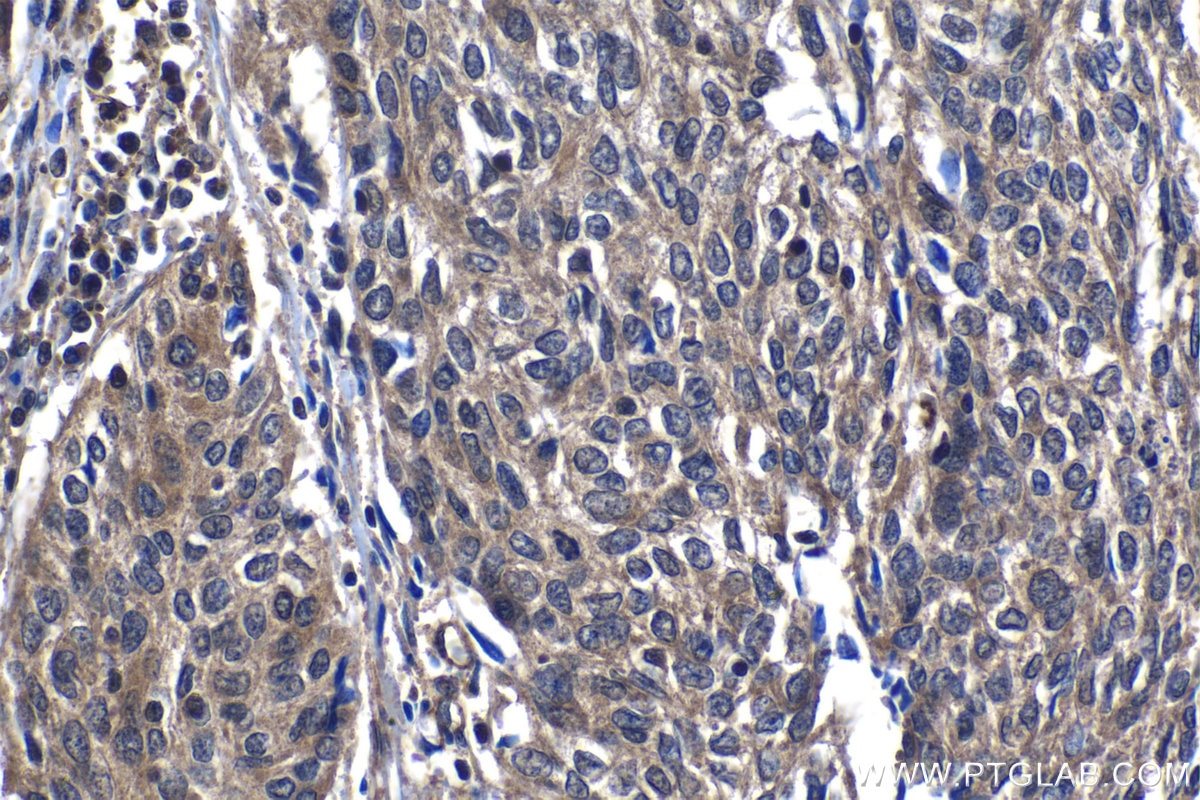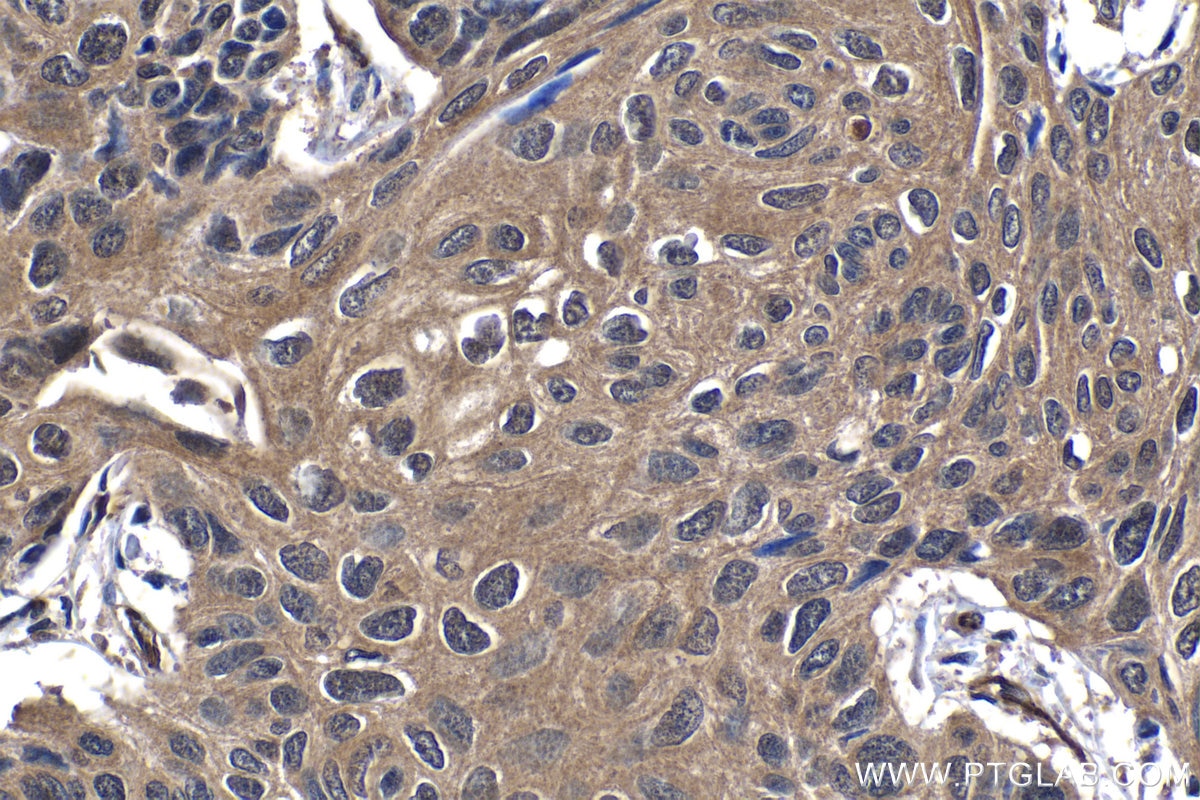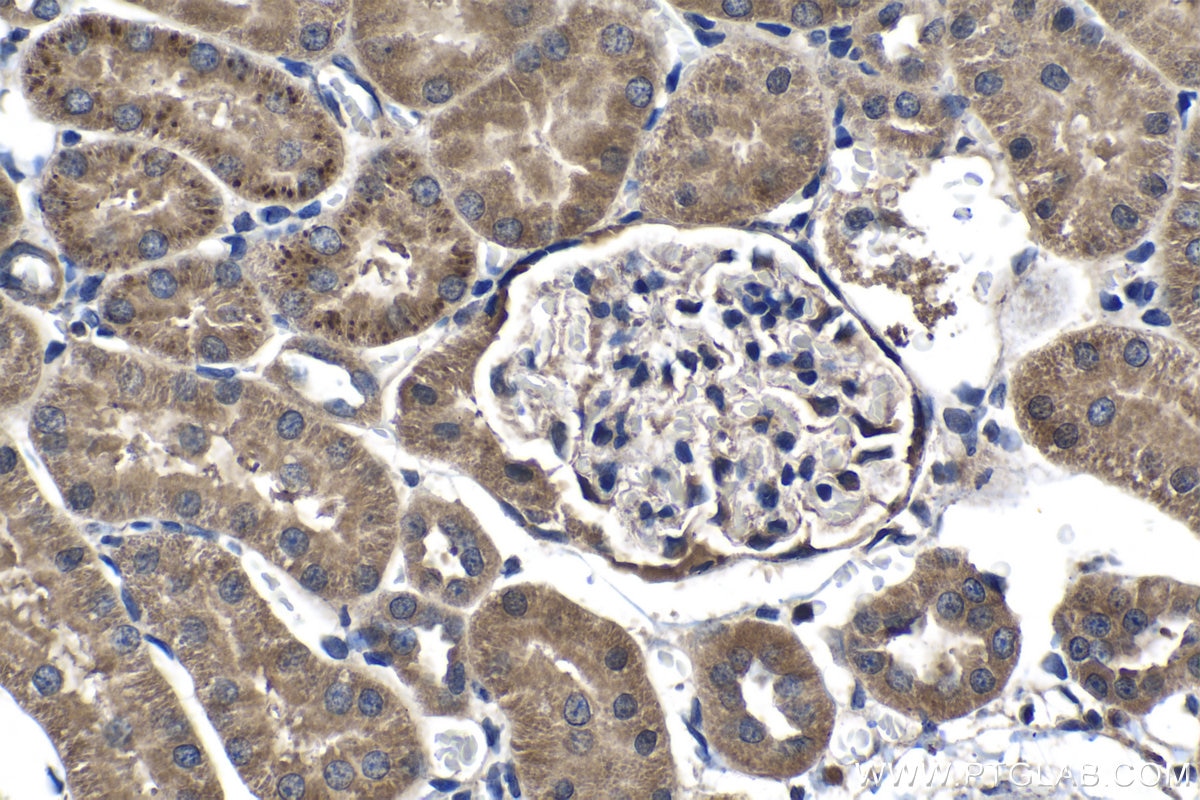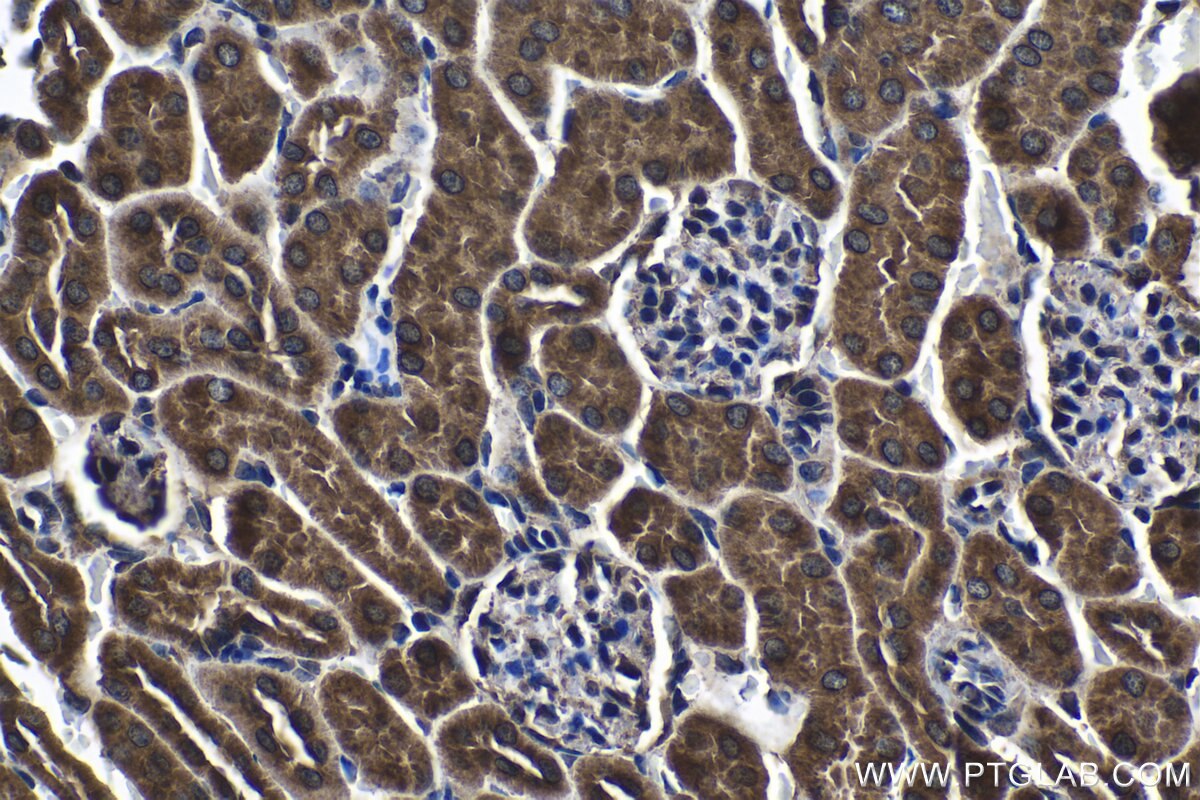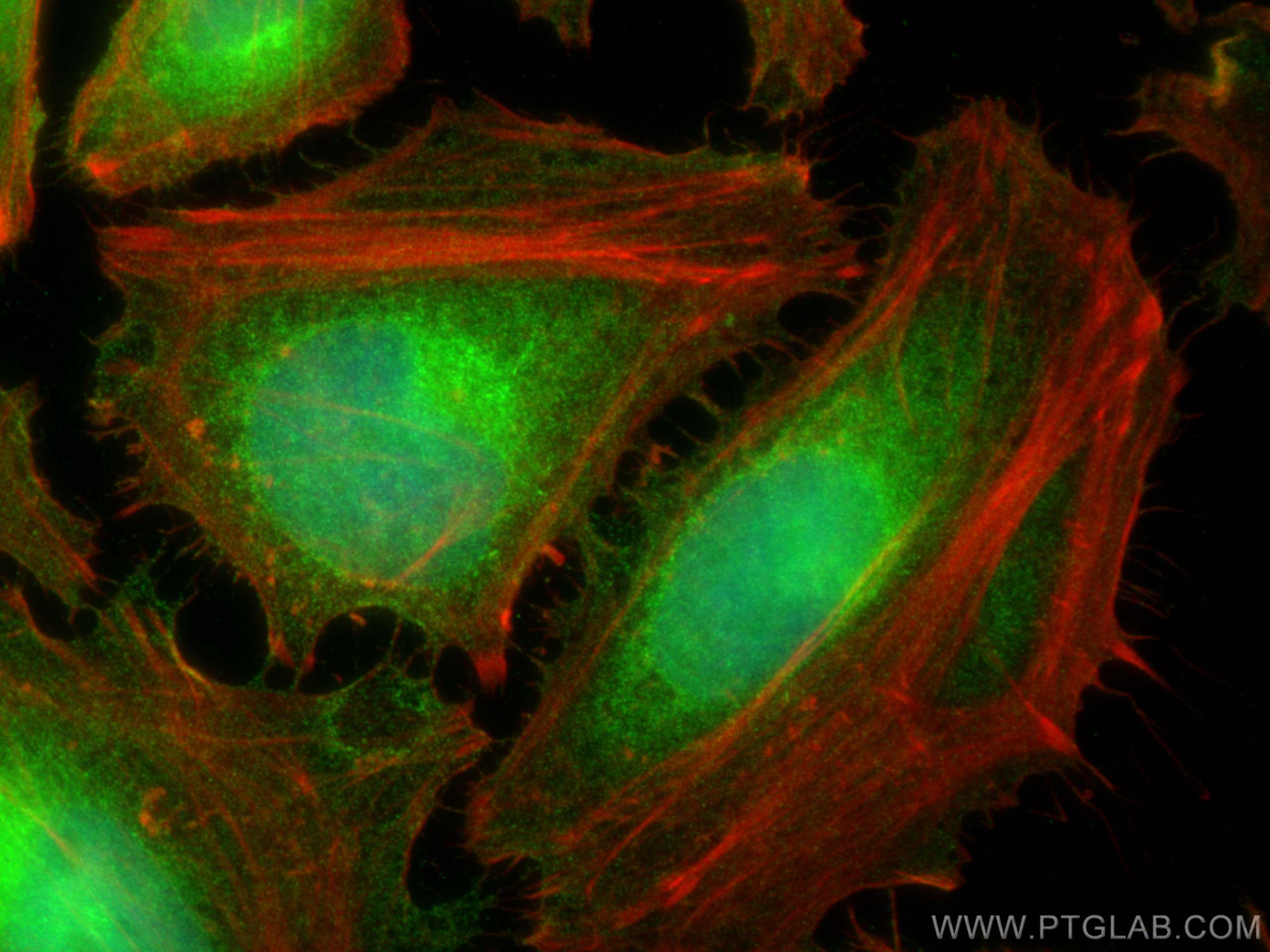Tested Applications
| Positive WB detected in | HT-1080 cells, mouse pancreas tissue, A549 cells, mouse bone marrow, HeLa cells, HepG2 cells, Jurkat cells |
| Positive IP detected in | A549 cells |
| Positive IHC detected in | human lung cancer tissue, human colon tissue, human cervical cancer tissue, rat kidney tissue, mouse kidney tissue Note: suggested antigen retrieval with TE buffer pH 9.0; (*) Alternatively, antigen retrieval may be performed with citrate buffer pH 6.0 |
| Positive IF/ICC detected in | HeLa cells |
Recommended dilution
| Application | Dilution |
|---|---|
| Western Blot (WB) | WB : 1:2000-1:10000 |
| Immunoprecipitation (IP) | IP : 0.5-4.0 ug for 1.0-3.0 mg of total protein lysate |
| Immunohistochemistry (IHC) | IHC : 1:500-1:2000 |
| Immunofluorescence (IF)/ICC | IF/ICC : 1:200-1:800 |
| It is recommended that this reagent should be titrated in each testing system to obtain optimal results. | |
| Sample-dependent, Check data in validation data gallery. | |
Published Applications
| KD/KO | See 1 publications below |
| WB | See 50 publications below |
| IHC | See 7 publications below |
| IP | See 5 publications below |
| CoIP | See 1 publications below |
Product Information
14906-1-AP targets FADD in WB, IHC, IF/ICC, IP, CoIP, ELISA applications and shows reactivity with human, mouse samples.
| Tested Reactivity | human, mouse |
| Cited Reactivity | human, mouse, rat, monkey, bovine, sheep |
| Host / Isotype | Rabbit / IgG |
| Class | Polyclonal |
| Type | Antibody |
| Immunogen |
CatNo: Ag6701 Product name: Recombinant human FADD protein Source: e coli.-derived, PGEX-4T Tag: GST Domain: 1-208 aa of BC000334 Sequence: MDPFLVLLHSVSSSLSSSELTELKFLCLGRVGKRKLERVQSGLDLFSMLLEQNDLEPGHTELLRELLASLRRHDLLRRVDDFEAGAAAGAAPGEEDLCAAFNVICDNVGKDWRRLARQLKVSDTKIDSIEDRYPRNLTERVRESLRIWKNTEKENATVAHLVGALRSCQMNLVADLVQEVQQARDLQNRSGAMSPMSWNSDASTSEAS Predict reactive species |
| Full Name | Fas (TNFRSF6)-associated via death domain |
| Calculated Molecular Weight | 23 kDa |
| Observed Molecular Weight | 23-30 kDa |
| GenBank Accession Number | BC000334 |
| Gene Symbol | FADD |
| Gene ID (NCBI) | 8772 |
| RRID | AB_2100486 |
| Conjugate | Unconjugated |
| Form | Liquid |
| Purification Method | Antigen affinity purification |
| UNIPROT ID | Q13158 |
| Storage Buffer | PBS with 0.02% sodium azide and 50% glycerol, pH 7.3. |
| Storage Conditions | Store at -20°C. Stable for one year after shipment. Aliquoting is unnecessary for -20oC storage. 20ul sizes contain 0.1% BSA. |
Background Information
Fas-Associated protein with Death Domain (FADD), also called MORT1 or GIG3, is encoded by the FADD gene. FADD is an adaptor protein that bridges members of the tumor necrosis factor receptor superfamily, such as the Fas-receptor, to procaspases 8 and 10 to form the death-inducing signaling complex (DISC) during apoptosis. As well as its most well known role in apoptosis, FADD has also been seen to play a role in other processes including proliferation, cell cycle regulation and development. FADD has a calculated molecular mass of 23 kDa and always can be detected as 23-30 kDa (PMID: 15390286, 22864571, 17977957)
Protocols
| Product Specific Protocols | |
|---|---|
| IF protocol for FADD antibody 14906-1-AP | Download protocol |
| IHC protocol for FADD antibody 14906-1-AP | Download protocol |
| IP protocol for FADD antibody 14906-1-AP | Download protocol |
| WB protocol for FADD antibody 14906-1-AP | Download protocol |
| Standard Protocols | |
|---|---|
| Click here to view our Standard Protocols |
Publications
| Species | Application | Title |
|---|---|---|
Cell Res The metabolite α-KG induces GSDMC-dependent pyroptosis through death receptor 6-activated caspase-8. | ||
Cell Commun Signal Deubiquitinase USP5 regulates RIPK1 driven pyroptosis in response to myocardial ischemic reperfusion injury | ||
PLoS Biol A unique death pathway keeps RIPK1 D325A mutant mice in check at embryonic day 10.5. | ||
Eur J Med Chem PKM2/PDK1 dual-targeted shikonin derivatives restore the sensitivity of EGFR-mutated NSCLC cells to gefitinib by remodeling glucose metabolism | ||
Cancers (Basel) Astragaloside IV Inhibits the Proliferation of Human Uterine Leiomyomas by Targeting IDO1 | ||
Int Immunopharmacol EGFR-TNFR1 pathway in endothelial cell facilitates acute lung injury by NF-κB/MAPK-mediated inflammation and RIP3-dependent necroptosis |
Reviews
The reviews below have been submitted by verified Proteintech customers who received an incentive for providing their feedback.
FH Isha (Verified Customer) (12-15-2021) | Got really good bands in kidney lysates at 1:800 dilution
|

